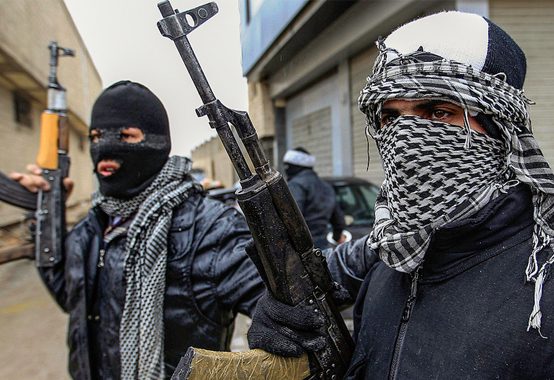By far the most consequential single Saudi arms purchase was not from the Balkans, however, but from the United States. It was the December 2013 U.S. sale of 15,000 TOW anti-tank missiles to the Saudis at a cost of about $1 billion—the result of Obama’s decision earlier that year to reverse his ban on lethal assistance to anti-Assad armed groups. The Saudis had agreed, moreover, that those anti-tank missiles would be doled out to Syrian groups only at U.S. discretion. The TOW missiles began to arrive in Syria in 2014 and soon had a major impact on the military balance.
This flood of weapons into Syria, along with the entry of 20,000 foreign fighters into the country—primarily through Turkey—largely defined the nature of the conflict. These armaments helped make al Qaeda’s Syrian franchise, al Nusra Front (now renamed Tahrir al-Sham or Levant Liberation Organization) and its close allies by far the most powerful anti-Assad forces in Syria—and gave rise to the Islamic State.
By late 2012, it became clear to U.S. officials that the largest share of the arms that began flowing into Syria early in the year were going to the rapidly growing al Qaeda presence in the country. In October 2012, U.S. officials acknowledged off the record for the first time to the New York Times that “most” of the arms that had been shipped to armed opposition groups in Syria with U.S. logistical assistance during the previous year had gone to “hardline Islamic jihadists”— obviously meaning al Qaeda’s Syrian franchise, al Nusra.

This flood of weapons into Syria, along with the entry of 20,000 foreign fighters into the country—primarily through Turkey—largely defined the nature of the conflict. These armaments helped make al Qaeda’s Syrian franchise, al Nusra Front (now renamed Tahrir al-Sham or Levant Liberation Organization) and its close allies by far the most powerful anti-Assad forces in Syria—and gave rise to the Islamic State.
By late 2012, it became clear to U.S. officials that the largest share of the arms that began flowing into Syria early in the year were going to the rapidly growing al Qaeda presence in the country. In October 2012, U.S. officials acknowledged off the record for the first time to the New York Times that “most” of the arms that had been shipped to armed opposition groups in Syria with U.S. logistical assistance during the previous year had gone to “hardline Islamic jihadists”— obviously meaning al Qaeda’s Syrian franchise, al Nusra.






